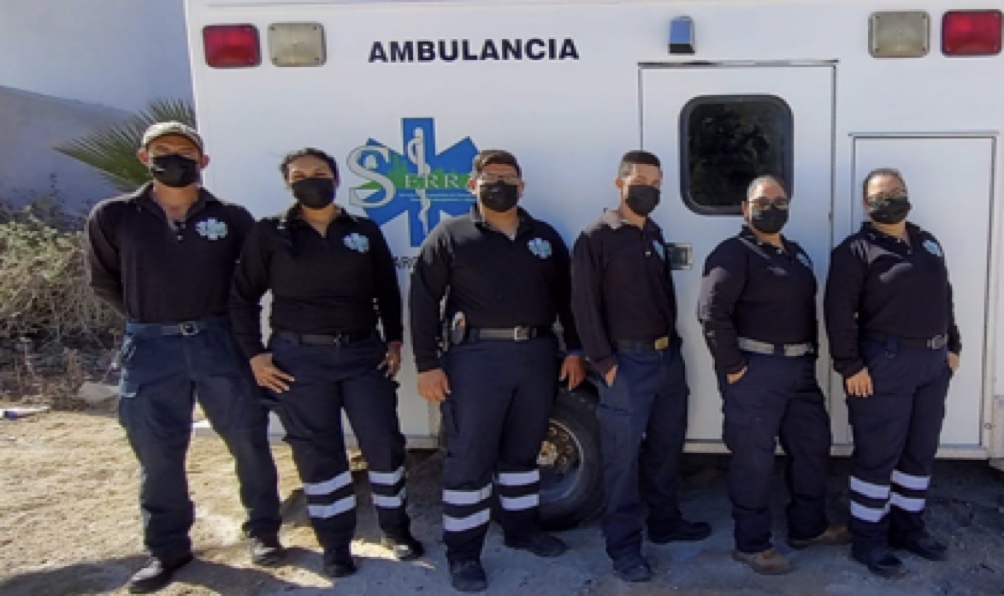(Content provided by Chris Bradley – Updated Feb 2022.
Please email the View with feedback & corrections.
See In Case of Emergency for emergency numbers – police, clinics, etc)
What Visitors and Residents Need to Know About Our Ambulance
- It is not a free government service or a mobile clinic.
- It is run entirely by a small number of well-trained paramedics. The paramedics were volunteers for many years, but now we are happy to say, they have started to receive a small wage for their hard work.
- The ambulance is for EMERGENCIES, such as serious bleeding or fractures, suspected spinal injury, heart attack, stroke, extreme respiratory distress, anaphylactic shock, loss of consciousness, or other life-threatening conditions.
- For other cases the crew will stabilize the patient for transport to hospital in their own or other personal vehicle, so the ambulance can remain on-call for more urgent cases.
- Please note that the ambulance does not transport patients home again.
To Reach The Ambulance
Call our amazing Comandante Lupita Cosio direct +52 (1) 612-159-0468 (faster than calling 911). She has been running the ambulance service for the community for over 12 years, 24/7.
- You will need to give clear and accurate information about your location, in Spanish if possible.
- If you think you have Covid, you must immediately tell the crew so they can use their full protective gear.
Meet the Crew!

Keeping the Ambulance Running is Very Costly
The need for cash is continuous for gas, maintenance, repairs, tires, equipment, supplies, obligatory ongoing trainings, uniforms, communications, volunteers’ costs when on duty, etc. For the service to continue, users need to pay their costs, and supporters need to donate. You might have to rely on the ambulance yourself one day!
If you use the ambulance, you will be asked to pay as follows:
- Assessment and treatment on the spot: 1,500 pesos, OR
- Assessment and emergency transfer to a La Paz hospital: 3,000 pesos; AND
- Costs of treatment and supplies used: e.g. 1,000 ps each 20 mins oxygen, neck brace 1,500 ps, intravenous drip 1,500 ps, injected pain-killer 1,000 ps, etc. Costs have risen greatly in the last 2 years.
- Please add a generous donation for the ambulance crew, to acknowledge their time, training, skills and dedication. They are unpaid, but need to survive. If they burn out, the service will fold.
Paying and Donating
- Users: Please pay at the time of call-out via paypal.me/ambulencia247, or in cash (pesos or USD). You will receive a receipt for the callout and other costs (excluding donations) that can be used for your insurance claim.
- Donors: Use this link: https://tinyurl.com/y3ryfxew or contact Lupita directly by phone or Whatsapp to give cash: +52 (1) 612 159 0468.
Or contact any of the following Ambulance Project Group members – Manon Levac: manonlevac@hotmail.com, Thomas Munro: thomasmunrosr@gmail.com, Heidi Hart: harthe77@gmail.com, Bobbie Shirley: Bajabuddies1@gmail.com, Alicia Brooks: Aliciacharlenebrooks@gmail.com
Donations are essential for keeping the service running and are greatly appreciated. The tiny government subsidy we do receive from the Delegado, all goes to fuel. We receive $1,200 pesos, but it costs $5000 pesos to fill up the Ambulance. It may cover 1 trip to La Paz a week and we average 3 a week.
Hospitals in La Paz
- 2 private hospitals: the Fidepaz (“purple hospital” – 612-124-0400 – 08) on Delfines street at the Walmart end of Abosolo, and the Centro Medico (“white hospital” – 612-124-1165) opposite it. Fidepaz is much larger.
- Salvatierra public hospital: is cheaper but much more crowded (612-175-0500). Go straight at the Soriana intersection, then 1st left on Paseo de las Deportistas and keep going.
- For extreme emergencies, the ambulance is obliged by law to drive straight to the Emergency Unit at the closest hospital (Salvatierra) and not to a private hospital.
IMPORTANT: If you go to hospital, whether by ambulance or not, bring your credit card, insurance papers, passport, cell phone and charger, prescription glasses (if needed), and details of people to be contacted.
The private hospitals provide a comfy couch and bedding for a friend or family member to stay with you overnight. If admitted, you should arrange for someone to do this for you as you will find it enormously helpful.